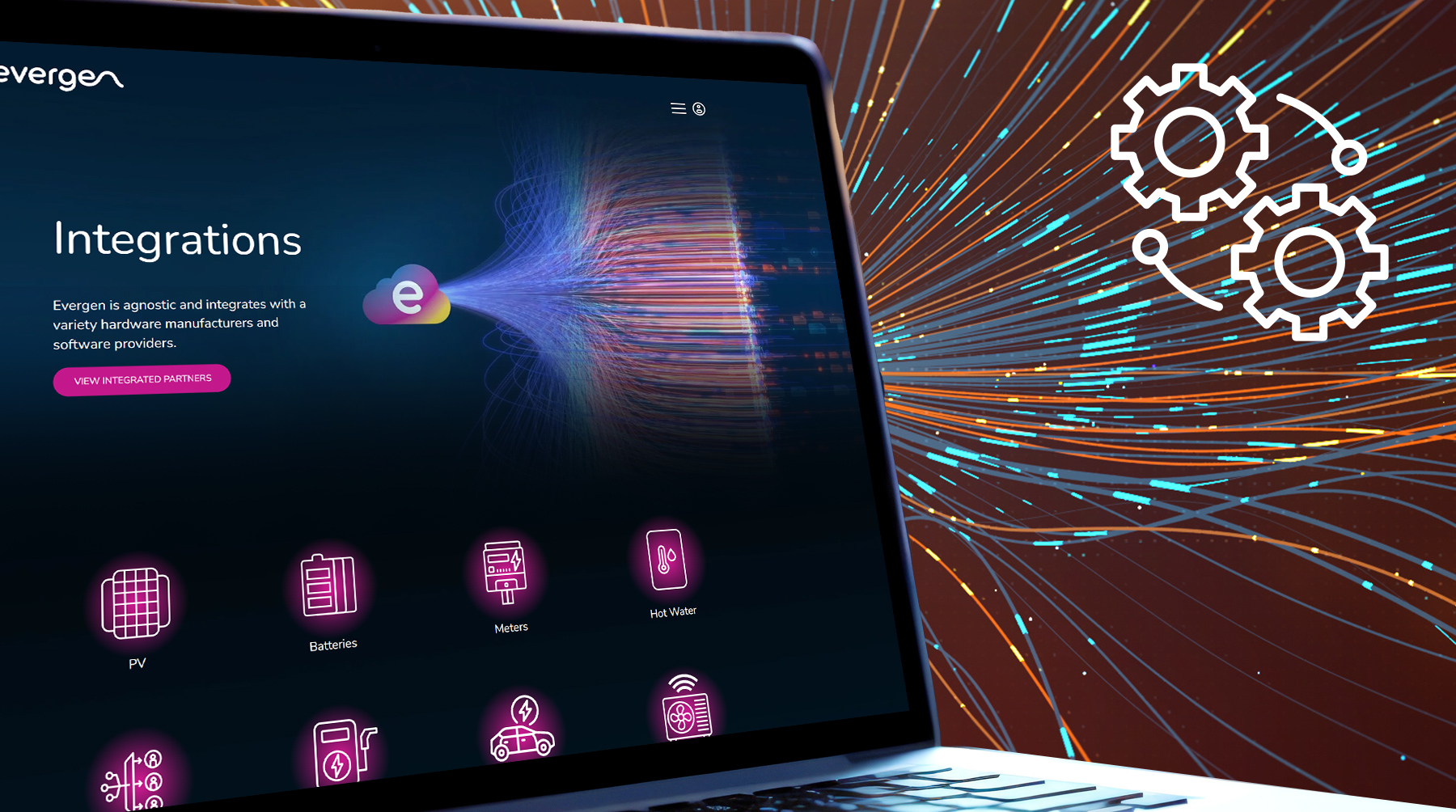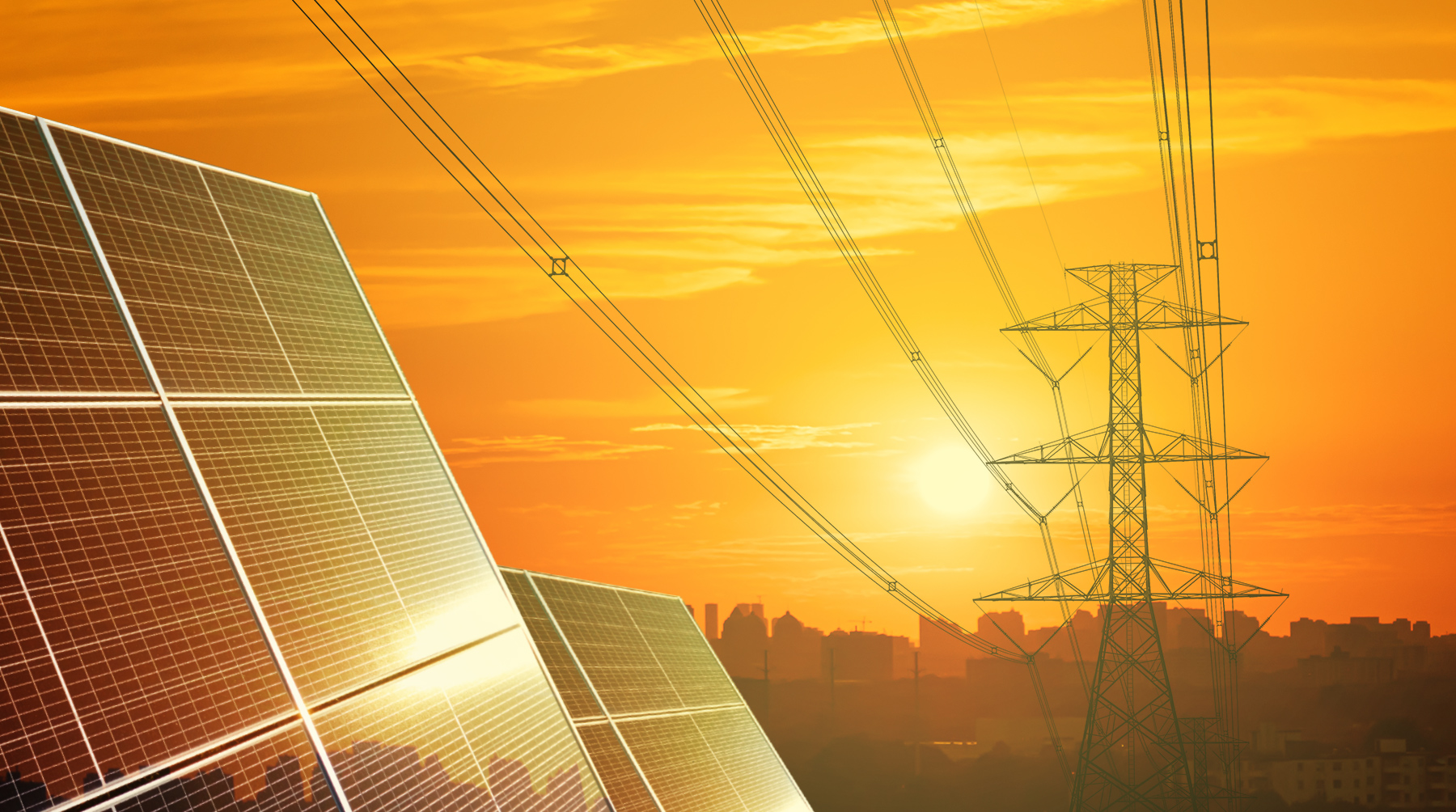An interview with Ben Hutt, CEO and Managing Director at Evergen
Renewable energy systems are disruptive and responsible for significant economic and social changes in Australia and globally. Evergen CEO and Managing Director Ben Hutt recently gave a presentation focusing on how the necessary disruption of the Australian energy grid can be better coordinated to create a more resilient energy system.
Below is a brief synopsis of the history of the grid in Australia, its problems when it comes to the transition into renewable energy and the opportunities expected for the decentralisation of the grid.
Q: What is the history of the grid and what are the challenges that it faces now?
A: Electricity in Australia started in a very typical Australian way. Everyone was trying to do it themselves in their own local area with their own design and needs. This created a whole bunch of different people around the country trying to bring energy en masse. In 1927 there were lots of little grids popping up around the country to serve small but no doubt, growing communities. They were all designed with slightly different technical aspects. If we look at the grid now, you’ll see that as the population’s extended, the poles and wires that carry electricity have extended significantly.
The grid was created as a one-way system, with one coal-fired power station distributing energy to hundreds of thousands of people. The mass adoption of rooftop solar and other kinds of renewables has disrupted this one-way flow: we now have higher voltages on local distribution lines as a result. Voltages can be so high as to be dangerous necessitating costly interventions from operators to safeguard the grid. To decarbonise we need to maximize the consumption and the use of sustainably created green energy and reduce, or ideally completely remove, our dependency on fossil fuels. To do this whilst maintaining the safety and reliability of the grid is a one of the biggest challenges of the energy transition.
The demise of fossil fuel powered generators is good for decarbonisation but it changes the quality of the electrical current flowing through the grid, creating headaches for grid operators. Big generators exert predictable forces on electrical current, which helps maintain the flow of electricity. Intermittent sources of energy don’t have the same impact, so the grid becomes more unstable as big generators are mothballed and replaced with renewables. The grid can be augmented with devices that simulate the predictable forces of big generators but these necessitate investment. As the stabilising influence of big generators was largely taken for granted during their lifetime, we lack a way to pay for the kind of network stabilisation that we will need in the future.
The way operators manage the grid is changing too. It is incredibly hard to predict when amounts of energy are going to be consumed. There are hot days, cold days, weekdays, weekends and public holidays are different again. If there was one control room that was making all of these decisions and had visibility of the whole thing, you could argue that the complexity could be managed in one place. Unfortunately, that’s not how it works. Distributed energy is making the complex task of predicting electricity flows on the grid even more difficult, just as voltages are becoming dangerously high and the grid is becoming increasingly unstable.
The final high level challenge is that the network operators (transmission and distribution) are businesses built on dealing with local evolution and local customers. One network operator may be dominant in Western Sydney and focussed on growth in that area. The questions they’re constantly asking themselves is, “when do I have to reinvest in new hardware?”, “when is my substation at capacity?”, and “when do I need to build another one?” Those investments are very significant and the network operators operate on long term plans. Network operators are generally ex-government entities and have heavily regulated businesses on which they can deploy capital and then have a regulated rate of return. They are not used to things changing fast, and let’s face it deploying poles and wires and related infrastructure across a country the size of Australia is a massive challenge.
Q: Who are the stakeholders in the energy market?
A: The grid and the energy system involves many participants.
Businesses/energy retailers: We’ve got businesses who depend on it to make money and serve customers with products and services – energy retailers whose job it is to maximize the return that they can get. And equally they have a legal obligation to keep the lights on. Changing the rules around investment, ownership, and the regulated rate of return is a massive issue that would have very significant impacts on these businesses, but in the medium term be positive for the system as a whole.
Federal and state governments: The absence of federal leadership, when compared to somewhere like Germany, is certainly one of the problems that we face. State governments arguably care more than the federal government because they’re more at the coalface with their voters and their electorate, and they’re on a different election cycle. But the problem that those two entities face together, and that we as consumers and people trying to change the system face is that all of these governments are on very short time horizons. The two – four-year election cycle means that people campaign with promises that they think they can implement in two years. Whereas if we were in a much more autocratic society where decisions are made on a 10-year horizon, not a two-year horizon, lots of these things would be much easier to solve.
Regulators: In Australia we have three main organisations for energy, the AER, AEMC and AEMO. There are other government bodies at federal and state level (e.g. the Energy Security Board). Whilst all of these groups act on the same basis of trying to do the right thing for the system and consumers, they can have competing priorities and interests. So there’s just yet another layer of complexity that you can’t go and speak to one body and develop a plan. You need to deal with the competing priorities of three or more entities, who themselves have to deal with the competing needs.
Network operators, distributors and generators: The network operators and distributors are critical in this whole process because they are the fabric that connect homes and their rooftop solar with other homes and their rooftop solar, and equally anyone consuming electricity has to deal with the network operator. Generators generate electricity. Some generators are also retailers (i.e. are vertically integrated). For example, Origin and AGL control significant generation capacity. That’s both good and bad for the market. It’s good because it should allow the price of energy to be relatively predictable and as cheap as possible because of the scale at which they operate, but it’s bad because they can also exert unfair market power. A recent example of that might be distorting feed in tariffs to stop people investing in things like distributed storage and batteries. They can do that because of the millions and millions of customers that they control, but obviously because they own coal-fire generation, they also have a vested interest in holding back the evolution and the demise of that industry, which most of us believe should be inevitable.
Consumers: There are only so many choices we can make and our ability to maximize the value from our investment in renewable energy or support the mass transition to renewable energy is really constrained by all of these other parties. And that’s why voting with our feet isn’t necessarily enough by itself. I thought it’d be interesting just to kind of map out who’s changing and who’s not because what you’ll notice is there’s a radically different pace of change between some constituents and others.
Q: How are the energy generators evolving?
A: Electricity generation in Australia has remained relatively constant until quite recent times. We still have lots of coal-fire generators. It’s widely believed that we only have six. That is complete rubbish. We have roughly 20 dotted all around the country of varying ages. Some of them are closer to retirement than others.
Gas was the recent invention of the last 20 years and the idea was to have Australia as a prolific producer of gas. Therefore, we should be using that to reduce the cost of energy. The problem is that we’ve chosen to export our gas at a price that’s really high because China and the rest of the world need it. Meanwhile Victoria’s gas production is in sharp decline with gas shortages in southern states predicted in coming years. To avert this, we will need to tap into new sources of gas: possibly from new gasfields in northern states, but transportation to population centres will be costly, either necessitating new pipelines overland or shipping by sea, which involves sizable losses and building regasification terminals. All of these forces result in high gas prices being embedded into our generation and our firming capacity, which means it’s more expensive than it should be.
We have also seen a mass investment in wind, which is now a significant portion of our energy resources across this country. But wind has created a problem of its own, which is that the turbine blades, which are larger than the blades on a 747, can’t be recycled. So they’re all going in the ground, which seems like a problem worth solving another day. In the last decade, what we’ve seen as the cost of solar hardware has come down as we’ve seen people realizing that you can generate solar energy on a really, really large scale at an economically viable price. Notwithstanding the friction that there is in trying to get these big things connected to the networks. I don’t know what proportion of Australia’s energy is created from wind farms, but I know it’s significant.
Q: How are consumers evolving?
A: From a consumer point of view, we’ve had a whole range of choices that we can make in Australia. There was mass adoption driven through heavy subsidy schemes in the early 2000s, and that decade really was the start of mass adoption of solar in Australia. The quality of the technology involved in those deployments is what I would argue is substandard now, and there are a whole bunch of things that went wrong in the industry at that point, most notably the pink bat scandals a cross that we have to carry, people selling substandard products to people and then walking away with no long term guarantees and no support. And that’s an issue that still exists to some extent in the industry.
Q: What is battery optimization and why is it important? How does it impact a system owner?
A: In the last five years, in particular, the technology and the scale at which solar is produced, particularly across China; the quality of the technology has improved exponentially, which means the output you get from modern solar panels is massively greater than it was. The cost has declined rapidly so that solar is now effectively affordable at a consumer level and there are returns on investment levels without subsidy. What we’ve seen in the last two years, in particular, is the evolution of batteries, predominantly lithium batteries. But the technology and the scale at which these batteries are being produced now is allowing them to become almost a mass market product. We’re not quite there yet and they’re still more expensive than they should be because lithium as a raw material and some of the other precious metals are more expensive due to global demand. Batteries serve to be a really important building block on which a much more resilient, stable, cost-effective network can be built. Value available to consumers and the system as a whole from batteries is increasing rapidly, and it’s smart software that enables this.
We’ve seen big batteries, most notably the Hornsdale Power Station, which is really a big battery that was kind of done as a gesture of what’s possible by a whole bunch of clever people, including Elon Musk and the SA Government. These big batteries (increasingly connected to solar or wind farms) can charge up with green electricity and then provide inputs to the grid when most needed, whether that be peak demand or to help stabilise fluctuations in frequency. Given the curtailment currently occurring to households, businesses, and solar/wind farms, batteries will become a much more valuable asset in the near future.
Q: How are networks evolving?
A: There’s a whole bunch of things that are still the same as they were more than 100 years ago and only very recently has there been testing and learning, at least in this country, around microgrids and embedded networks. The interesting thing about that is that there are third world countries adopting these technologies in rudimentary ways – literally stringing together houses with a wire from roof to roof. It’d be great to be able to do that in Australia but the issue getting in the way is the networks. Whilst lots of other bits of the industry have evolved quite significantly, the networks have been somewhat slow to the party thus far, and the regulations are the major blocker for this at this stage.
Q: The decentralisation of the grid: What does it mean and how can localised PV battery storage complement existing systems?
A: A system composed of many small, interconnected nodes or assets, should be much more resilient than a network composed of a small number of big things. The trick is in balancing the needs and the competing functional requirements of all the pieces of the jigsaw.
Just as generation capacity has proliferated in small residential assets, the process of managing electricity transmission must now focus on local areas. The objective is to control the interaction between millions of individual rooftops and local consumption patterns so that green energy from PV doesn’t go to waste and the grid can operate safely. Grid operators will need smart systems handling significant amounts of data in order to manage lots of small things.
In addition to managing smaller, local energy flows, grid operators will need to interact with local storage. The need for storage will increase, both to supply green energy after dark and to support the grid as big generators grow scarce. Managing household and community batteries will rely on smart systems to store and supply energy at the right time. Network companies, local governments and consumers could all be pivotal players in owning and managing storage.
There is an open question on who will be responsible for the operation of a decentralised grid. It could be network companies armed with a new mandate or government bodies or other groups of businesses and consumers. Regardless of who is on the hook, the objectives remain the same, facilitate access to green energy with storage, drive costs down through automation and keep the electricity flowing safely so the lights stay on.
.
Q: What are the challenges and opportunities in the near future for the decentralisation of the grid? And what does the future hold?
A: This whole transition is super complicated. The basic problem that we all need to solve is that we need to reduce the cost of energy, we need to reduce our carbon footprint, not just at an individual level but at a national level, and we need to increase the reliability and the resilience in the system.
And achieving that requires things at a systematic level to happen. We need federal leadership from the government, we need clarity on the path forward. We need market based pricing for consumers changing behavior. We need people to pay consumers for turning things off when it’s a hot day and the system needs people to turn their air conditioning down for an hour. We need the network operators and regulators to pull together all the data generated around ownership and consumption so that they can see what’s actually happening and make better decisions around predicting when we’re gonna need to do things. We need market based pricing to signal the value to consumers for changing their behavior.
In the last 12 months, and particularly in the last six months, the network operators are starting to think they need to move faster, which is good. There is a problem though, which is that 95% of their business is focused on the regulated energy markets, which is really where they invest capital, they get a regulated rate of return. Their interests are primarily focused on doing the same thing, but just doing more of it whereas what we’re trying to do is to drive towards experimentation that allows the whole system to evolve. One of the things that makes this really hard is that you can’t just turn the old system off and turn a new one on. It’s clearer now than ever that what we need is a new system, not just a marginally better version of the old one. The world is watching to see how Australia deals with this transition. In many respects we are leading innovation in the space, despite some significant structural challenges and absence of clear federal policy.



